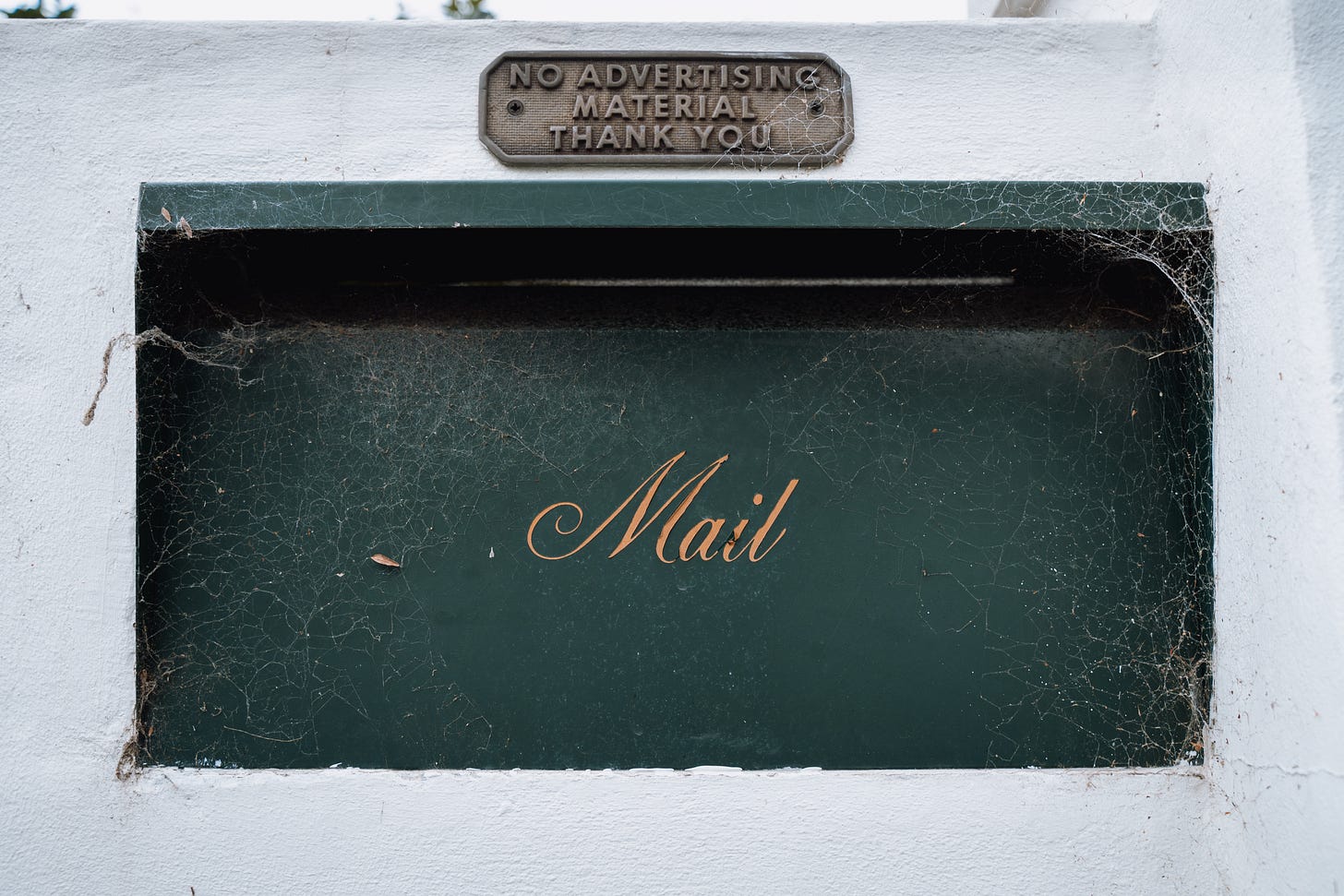For some really cool and some rather boring reasons I have been moving around 20 times in the last years. And every time I move into a new apartment, I have to reinvent my daily routines. Where can I buy groceries, which place has the best coffee, do I want to exercise in nature or join a gym, and how do I meet my future friends?
In all German cities only one thing seems constant: When I visit my mailbox, it's always full of junk. Flyers from the Italian pizza place, free newspapers, high gloss brochures for menswear, official-looking letters that turn out to be advertisements from a bank, and almost lost between the explosion of colors and headlines: the occasional postcard from my family.
I wonder if the historic letterbox was renamed mailbox at the point when we started receiving more brochures a.k.a. junk instead of letters.
Like 90% of all German households, I am one of those people who don't look at this advertising, but throw it straight into the trash can. If I'm lucky, a clever janitor has placed one right next to the mailbox, so I don't even have to take the advertising back to my apartment.
One day, however, I had carried a large stack of ads into my apartment and placed them on my kitchen table. It seemed so high that it cast shadows on my breakfast, and I could almost see little mountain climbers working their way through snow and bad weather at the peak of the stack. So I began to do some research:
It turns out that in Germany we use 1.1 million trees, 42 billion liters of water and 4.3 billion kWh of energy per year to produce mailbox advertising. Add to that transport and storage in crowded city centers and the plastic some advertisement is wrapped in. Since our forests don't produce enough wood to make paper, we even buy it from countries like Brazil or Russia. The conversion rate of mailbox advertising is less than 5%. This means that only 5% of the people who receive the advertising then buy something or go to the store.
Here advertising in mailboxes is opt-out. If you put a little sign on the mailbox that says, "Please no advertising or free newspapers" advertisers are not allowed to leave anything. There are ways around this, but that's the basic principle.
So two years ago I did a little experiment, printed 4000 of these 'No Advertising' signs and distributed them to most households in my hometown. While I was distributing them I talked to some people. Some really liked the initiative, most people were indifferent and a few even wanted the ads.
For me one low point was talking to a young couple holding their toddler in front of their newly built house. They said they liked to look at the advertising of a supermarket chain. And all I could think was, "Why is an advertising brochure more important to us than preserving the world's forests for our children?”
Having studied communication, I know some of the tricks companies use to get us to buy products. In supermarkets, for example, fruits and vegetables are always at the entrance to create a market atmosphere and slow you down for the rest of your shopping. More expensive items are placed at eye level, to reach the less expensive ones you have to bend over. Essentials like toilet paper are in the back of the store, so you have to cross it and see all the other things.
And from my work in sales I also know that you need about seven points of contact - the so-called impressions - with your potential customer until they remember a product. So seven emails, push notification on your devices, phone calls, TV commercials, billboards, an influencer talking about it, seeing a logo at a sports event. And that includes cutting down millions of trees to create yet another impression through a crappy ad in your mailbox.
I can understand the young family with the toddler thinking, "It's only one brochure a week, what's the problem?". The problem is that little things add up, just like a lot of little brochures add up to a big forest.
Blogger Anne Marie Bonneau said, "We don't need a handful of people doing Zero Waste perfectly. We need millions who don't do it perfectly." And just as many small, seemingly unimportant, actions can lead us into a crisis, many small proactive steps can lead us out again.
There is movement. Too slow, but movement nonetheless. Some companies have already announced that they will stop mailbox advertising. Amsterdam in the Netherlands has made advertising in mailboxes opt-in. Only when a homeowner puts a sign on the mailbox saying "I want advertising", advertisers are allowed to leave something.
I wish I had one solution, one thing that could be done to solve this issue. But I don't. Just a lot of little solutions: Making people aware, writing to businesses and actively unsubscribing from advertising, writing petitions and asking local authorities to act.
Don't forget and build momentum. Like a tree, change grows slowly.
Photo credit: Gilberto Olimpio / https://www.pexels.com/de-de/foto/metall-post-briefkasten-letterbox-5983865/



Such an important message! Thank you for sharing. This really stood out to me: Blogger Anne Marie Bonneau said, "We don't need a handful of people doing Zero Waste perfectly. We need millions who don't do it perfectly."